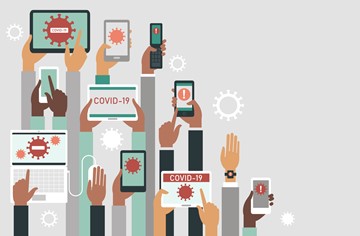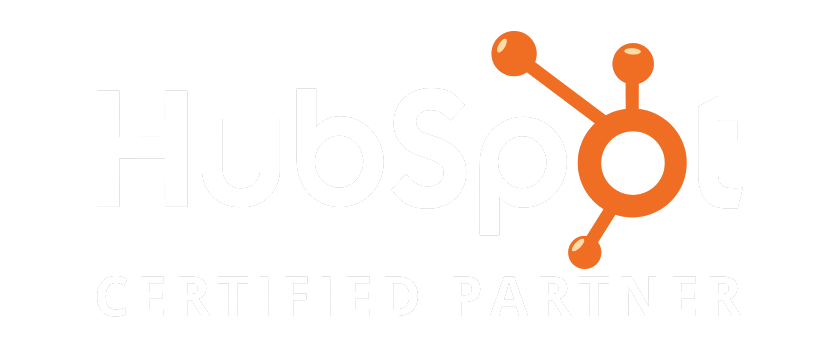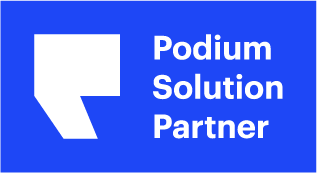We took for granted the communication tools we have available until March 2020 when the World Health Organization (WHO) declared a pandemic for COVID-19. The world shut down in a manner not previously seen, even in prior pandemics such as the flu pandemic of 1918.
In the months since the pandemic declaration, we have discovered communications tools like Zoom, GoToMeeting, Microsoft Office, and Google Office. We share documents in Internet blackboards and whiteboards that let us confer on business development from far away locations. What once was occasional use for business meetings when traveling away from the office became an everyday tool for continuing business as usual in an unusual time.
While far from early adopters, those who embraced using these online communication tools the work-from-home (WFH) set long had, were able to continue running their businesses. In some cases, they continued on as if no pandemic occurred. The WFH set continued on as if nothing had changed because for them it had not. Their productivity may have increased slightly since the once reticent suddenly began using the same tools they always had.
The uptake in online communications has increased outreach and improved business continuity. Bake More Pies has seen first-hand the impact that using these tools can have on a business, how they promote relationships, and how they keep us connected. Communication truly is powerful and necessary amidst a pandemic age.
Better Outreach Using Appropriate Methods
Both government and businesses need to reach people with their marketing messages. During a pandemic, medical personnel needs to reach the public with information that can help keep them safer. This means efficiently communicating infectious hot spots. It also means efficiently communicating safety methods, risk factors and information regarding travel restrictions and protocols.
The pandemic has brought about a large-scale application of marketing methods, especially the concept of the target audience. Tools like Facebook, Twitter, Instagram and Pinterest allow outreach to specific groups of people with custom messages. This enables medical professionals to provide safety protocols to divergent groups without creating information overload. Preparing the elderly population, for example, requires a different message than parents require for preparing children for school or a mid-30s career professional for work.
Combatting Fake/False News
While online communication has produced the ability to hone messages, it has also spawned a rash of fake or false news. This stems in part from the rise of community journalism which provided the general public the ability to post self-authored “news” items. While high-quality community journalism can and does give a voice to the disenfranchised, fake news simply creates an inappropriate disturbance that endangers people. Fake news during a pandemic about medical issues can cause individuals to take inappropriate measures to prevent or treat the disease. Formal news communication groups can use their traditional communication means such as newspaper or magazine while also using the Internet tools to further disseminate their timely, accurate, newsworthy messages.
At the same time, the communication tools we currently use on the Internet also provide the methods to combat fake news. The government, medical personnel, businesses, etc. can send clarifying messages directly to the population potentially affected by the fake news. This allows the population to receive the appropriate message using the appropriate method for them to consume the information as they need or desire. Both the real and fake news purveyors have equal access to these social media platforms, but the real purveyors can report the accounts of the fakes to have them removed and their IP addresses permanently banned. This option creates a mechanism for keeping the news channels clear and static-free.
Business Continuity
As evidenced by the WFH set, business continuity is a reasonable expectation and a plausible reality even during a pandemic. The Federal Emergency Management Agency posted information on how to create a viable business continuity plan and the resources to enact it.
Tools like Zoom let you meet with co-workers or collaborators long-distance via video chat and to share screens so each and every person can see what the others are working on, equally. This balance creates teamwork and enables each team member to contribute to the overall success of the organization.
Microsoft Office, Google Docs for Business, and Google Docs enable multiple team members to simultaneously work on documents, spreadsheets, presentations, etc. Intranets like Simpplr provide a turnkey solution for businesses to communicate long-distance while keeping the communications secure. Firewalls and VPNs also contribute to this safe, private communication.
How This Changes Marketing
With respect to marketing, since March, the use of digital marketing has necessarily increased. Once stay-at-home orders were issued, most people have remained at home. That resulted in rendering billboard advertising, store displays, and a multitude of other advertising means useless. It also increased the use of advertising online whether on social media, websites, search engines or in apps.
This created a need for instant re-writing of every business’s marketing plan and reconfiguration of their budgets. Suddenly, you could not depend on drive time to get seen. You could not depend on shared advertising with the business next door on signage. You could not depend on your business’s signage because, throughout the world, streets emptied, buses shut down, trains stopped running, and billboards went unnoticed. Without people on the streets, no person saw print advertising unless it appeared in a newspaper or magazine delivered to their home.
More people saw digital ads though. Suddenly, with no one in movie theaters, people turned to mobile television, cable and satellite. This created the need for new ads.
While no person ate out, restaurants that previously did not deliver began to do so. They partnered with businesses like Uber and Lyft to enable faster delivery without needing to hire new staff. That meant new ads to inform consumers of the new services – all digital or radio since people were most likely to see the ad on their smartphone or home computer which they now used for work.
The digital age meant that could happen quickly. On a quick turnaround, businesses redirected their advertising budgets and had their marketing staff create new campaigns and advertising. These ads appeared on social media, search engines, websites and apps.
The new communications on mobile devices keep growing as does that embedded in mobile television broadcasts. After the pandemic ends, these changes will likely continue with digital advertising continuing to grow. Many businesses have realized how effective working from home is and that they can reduce overhead by enabling employees to work from home.
This all works together to increase the need for effective, efficient digital marketing plans. Bake More Pies can help you with that! We strategize with our clients to create plans that reach their target audiences, then we create the content and advertising that reaches their audience. Let us help you connect with your potential customers. Contact us today!




